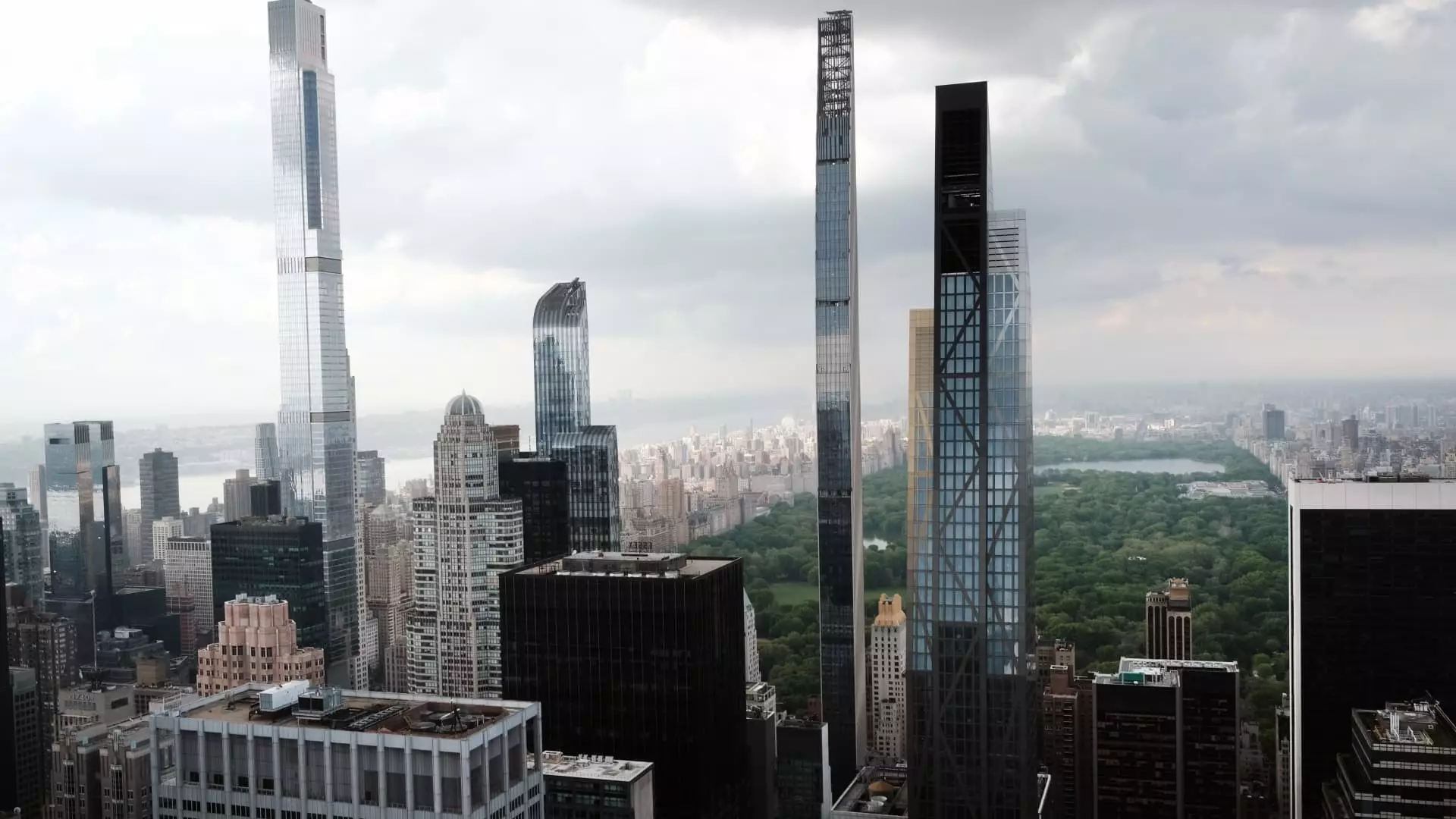Despite the looming specter of stock market volatility, Manhattan’s real estate market recorded a staggering 29% surge in apartment sales during the first quarter of the year compared to the same period last year. This spike is emblematic of a broader trend: the wealthy are increasingly prioritizing tangible assets like property over intangible investments, showcasing their wariness towards the unpredictable fluctuations of the stock market. The total number of closed sales jumped from 1,988 to 2,560, driven predominantly by the allure of luxury properties that have become more than just dwellings—they’re now shields against economic uncertainty.
The Allure of Luxury
Real estate appraiser Miller Samuel, in collaboration with brokerage Douglas Elliman, reported that overall apartment sales valued at $5.7 billion represent an astonishing 56% increase from the previous year. Most fascinating is the almost exponential growth in sales of high-end apartments priced over $5 million, which soared by 49%. Much of this growth can be attributed to a demographic shift: the ultra-wealthy often have the capacity to purchase in cash, insulating them from the constraints of rising mortgage rates. Indeed, 58% of all sales in this quarter were cash transactions, and for properties above $3 million, the figure climbs to a remarkable 90%. This trend suggests a stark divergence in the real estate market, whereby the affluent are capitalizing on their financial independence to acquire valuable assets, emphasizing a centrist liberal approach that regards ownership and investment in real estate as a pathway to wealth preservation.
The Fragile Mid-Market Segment
While the luxury segment flourishes, a significant shadow hangs over the mid-market arena of Manhattan real estate, encompassing properties priced between $1 million and $3 million. This sector experienced a troubling decline of 10% in signed contracts, raising eyebrows among brokers who are left to speculate on its sustainability. As the ultra-wealthy capitalize on robust returns and cash availability, the mid-market appears squeezed and may find itself vulnerable to an economic environment dominated by wealth stratification. Surprisingly, interest at the lower end of the market—properties priced between $500,000 to $1 million—has held steady, indicating that a wealth divide may be perpetuating not just in terms of asset value but also in terms of lifestyle choices.
The ‘Booster Shot’ of Returning Wealth
Brokers are also witnessing the phenomena of the so-called “boomerang wealthy.” Individuals who fled to sunnier climes like Florida during the pandemic are beginning to migrate back to New York City, enticed by the complex advantages of living in a metropolitan hub. Big banks and firms are now enforcing the return to corporate offices, which is encouraging affluent buyers to embrace the notion of permanent residence again. This injection of returning wealth is reshaping the narrative around Manhattan, suggesting that the pull of urban life still holds sway over those who might have previously considered permanent exile to the suburbs or sunbelt states.
Generational Wealth Transfer Underpins Future Growth
A seismic change is underway as unprecedented amounts of wealth transfer from baby boomers to their heirs are revolutionizing the buyer landscape. Brokers note that many of these new buyers are beneficiaries empowered by trusts and family offices, using their inherited wealth to carve out a life in Manhattan. Real estate agent Cindy Scholz captured this sentiment when she mentioned that a notable uptick in family office activity signifies a move toward investing in real estate as a long-term legacy-creating strategy. This influx is not just a momentary spike; it’s a cycle that is enabling generational wealth to not only persist but thrive amidst economic uncertainty.
Looking Ahead: Are We Riding a Wave or a Temporary Surge?
It’s essential to note that while the initial metrics showcase glimmering success, they were derived from transactions that were negotiated months prior, potentially glossing over the more immediate uncertainties that followed. Jonathan Miller, the CEO of Miller Samuel, cautions that even with the impressive figures, the sales seen are only marginally above the historical average for the past decade. However, the momentum is supported by strong signed contracts that indicate continued interest, especially in the luxury market, setting a precedent for potential persistence in high-end sales.
Ultimately, as the long-term viability of this trend is scrutinized, it’s becoming evident that Manhattan’s real estate sector is navigating uncharted waters. Whether it embodies lasting confidence or merely reflects fleeting enthusiasm remains to be seen, but the underlying economic dynamics make it an intriguing space to watch. As Manhattan’s residential landscape continues to evolve, the intersection of wealth, lifestyle choices, and investment strategies will undoubtedly yield profound implications for the market and community alike.

